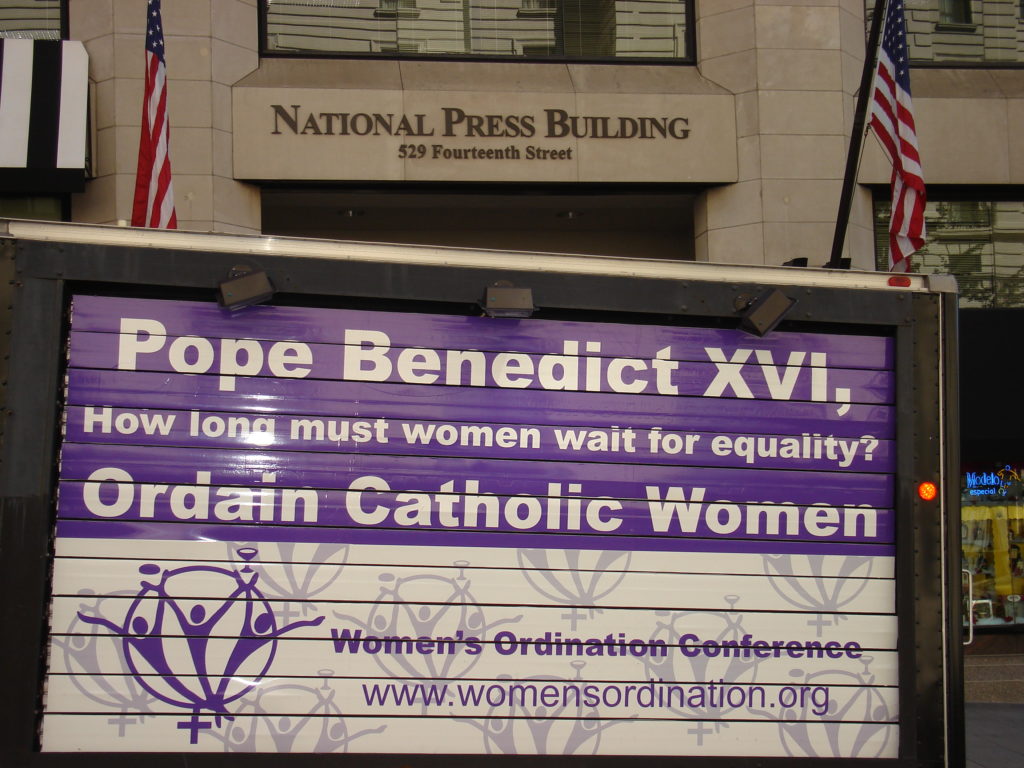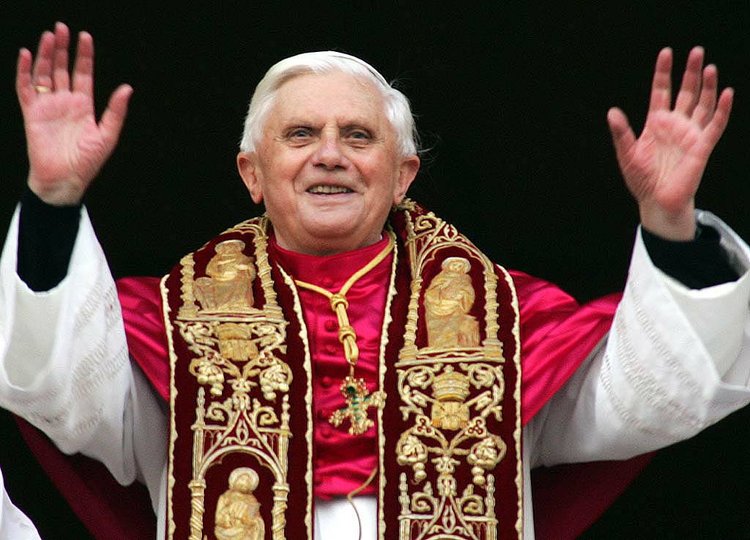Mourning Benedict XVI
Let us pray for the repose of the Augustinian soul of Pope Emeritus Benedict XVI. I have learned a lot of theology in the last week – but more of that later.
I had decided to start this blog as young Patrick Hudson started the Tablet weekly online update this week. I know he’s young because he’s remembering how he heard of the election of Joseph Ratzinger as pope in 2005. “Failing, as a seven-year-old, to anticipate writing a newsletter on the week of his death, I did not keep rigorous notes.” But here he is, writing about the death of that very Pope, almost twenty years later. The irony.
In contrast, I remember that moment very clearly. I had brought a radio to my office at Temple University and kept it on that afternoon. When the announcement finally came and I heard “Joseph,” I yelled “NO!” I found my colleague Steve Newman down the hall and he just said “the Pope?” The first thing I want to do in this column is to explain how Ratzinger was the nemesis of those of us who had worked for women’s ordination longer than he had been head of the Congregation for the Doctrine of the Faith, the CDF. When I gave talks, I would always say that this office was formerly known as “The Inquisition.” We felt that we were experiencing a great persecution.
That was my sense of what Ratzinger’s purpose and operation was all about. As I understood Vatican dynamics, he was the backbone behind John Paul II’s decree to forbid any discussion of women’s ordination. (I’m learning now it may have been the reverse, but it doesn’t matter.) I also used to say that Ratzinger raised that decree up a notch by implying that it was issued infallibly. Immediately the debate shifted to questioning that doctrine and papal power in general. Unanticipated consequences—a win for our side.
Because that’s how I, at least, saw it. We were a small group presenting our truth in the face of the massive institutional power exemplified by the CDF. Whenever any salvo came from the other side, our numbers and income increased. That ignores the pain and the temptation to despair that many felt, but to me it was building the movement. Consider the strength WOC manifests today. We kept to the course.
Whatever I learn now about Pope Benedict XVI and his contributions to theology and how kind he was in person, I sing to myself “You can’t take that away from me,” “that” being the severity of his condemnations. It wasn’t only women’s ordination. Robert Shine in New Ways Ministry’s Bondings 2.0 describes his “negative impact” on LGBTQ+ theology and people. American Catholic sisters are so nice, but eventually they get around to the challenge that the critique of the Leadership Conference of Religious Women and the Vatican investigation of their orders was in a Global Sisters Report article. WOC and others in COR organized the NunJustice campaign in solidarity with them. Remember that? Lauren Barbato of CTA has summarized the response of many reform groups to Benedict’s death. She includes an Instagram of the WOC billboard that followed Benedict around Washington DC on a truck during his visit, and she puts in this year’s red umbrella picture, lest we forget the long-term impact of the excommunications. Celia Viggo Wexler in Salon explains her article as “an attempt to stop a Benedict cult before it begins.” She “counts the ways” Benedict “harmed Catholics,” beginning with the ban on women’s ordination, which he “claimed…could never be lifted.”

Along with SNAP, WOC’s Kate McElwee is quoted in the AP article which my Google tells me must have been in every newspaper in the US and many abroad. WOC’s statement recognizing the adversarial relationship engendered by Ratzinger in the 1980s and 1990s must have been more quotable than New Ways’ account of founder Sr. Jeannine Gramick’s more complicated personal relationship.
And Gramick’s story told there is another example of what was true in that era: people were removed from ministries to which they had devoted their whole lives. Academics, especially those in religious orders, were uniquely vulnerable, according to Jamie Manson in NCR, who examines stories of suppression and silencing in detail. She writes about the work of Sisters Margaret Farley and Elizabeth Johnson, and how each faced criticism in the Benedict-era environment of “Countering Feminism.” Validation of these many theologians that comes now does not compensate for the injustice they suffered, but theology flourished despite these inquisitions, as Manson says.
Manson does more in this article; she places these actions in the context of Benedict’s own theological concerns. My required philosophy courses in colleges were based on Thomas Aquinas; whenever I heard “Augustinian” I never knew what that meant, except in Rosemary Radford Ruether’s dismissive comment. Manson explains the difference in the context of the dismissals and silencings, and allows me to understand Benedict’s underlying concerns for the doctrine of his faith, if I be allowed to almost coin a phrase. He consistently defended the church as he saw it.
In Commonweal, Christopher Ruddy provides a more lengthy examination of four “nodes” of Ratzinger’s Augustinian theology. I was prepared for this and for Manson’s article on Wednesday by listening to the Special Commemorative Tablet Webinar: The Legacy of Pope Benedict XVI, which does not seem to be available any more. Christopher Lamb talked to Rupert Shortt, author of a biography of Benedict, Professor Fr James Corkery SJ, former student of Joseph Ratzinger’s and an expert in Benedict’s theology, and Anna Rowlands, Professor of Catholic Social Thought and Practice at Durham University and adviser to the Vatican. I learned about the Augustinian slant on social justice teaching, and the conviction of all these speakers that there is more continuity between Benedict and Francis than not, except, of course, for liturgy. They stressed the style difference; Benedict as a man of the academy was tone deaf to the likely popular reaction to his actions, whereas Francis as a man of the streets says many of the same things in ways that people can hear. This difference was explored in many different contexts. One was the impact of Marxism on each. Benedict as a professor points out the errors, Corkery argues. Another was about the Synod. Rowlands notes, “Who is the we of the Church?” For Francis, it’s the “peripheries and the margins.” For Benedict, it’s “centralized, perfect, beautiful.” And Shortt explains Benedict’s failures of perception as causing many of his problems. This, I acknowledge, is a very superficial summary.
One of my friends responded to the highlight of coverage in the secular press of Benedict’s surprise resignation: Leaders step aside all the time. But in this perfect, beautiful church that reaches to the peripheries and the margins it ushered in a surge of hope and possibility that had seemed to be squelched, no matter what the intention had been. Where do we go from here? All of us, Thomists, Augustinians, feminists, survivors will respond to the Spirit that inspires each of us to weave our strands in the tapestry of faith.


3 Responses
In the world, and in the church, patriarchy is passing away.
I too yelled “ No!” when I heard “Joseph”. The pain and destruction this man caused before and after being Pope was and is enormous. Let’s hope that the signs of “santo súbito” displayed after his death don’t have the effect they had for John Paul. (Aside from Benedict and John Paul, this business of canonization every Pope is absurd. Pope doesn’t equate saint.)
Olivia, I hadn’t read your comment when I wrote the blog for Saturday. We are on the same page re Popes!